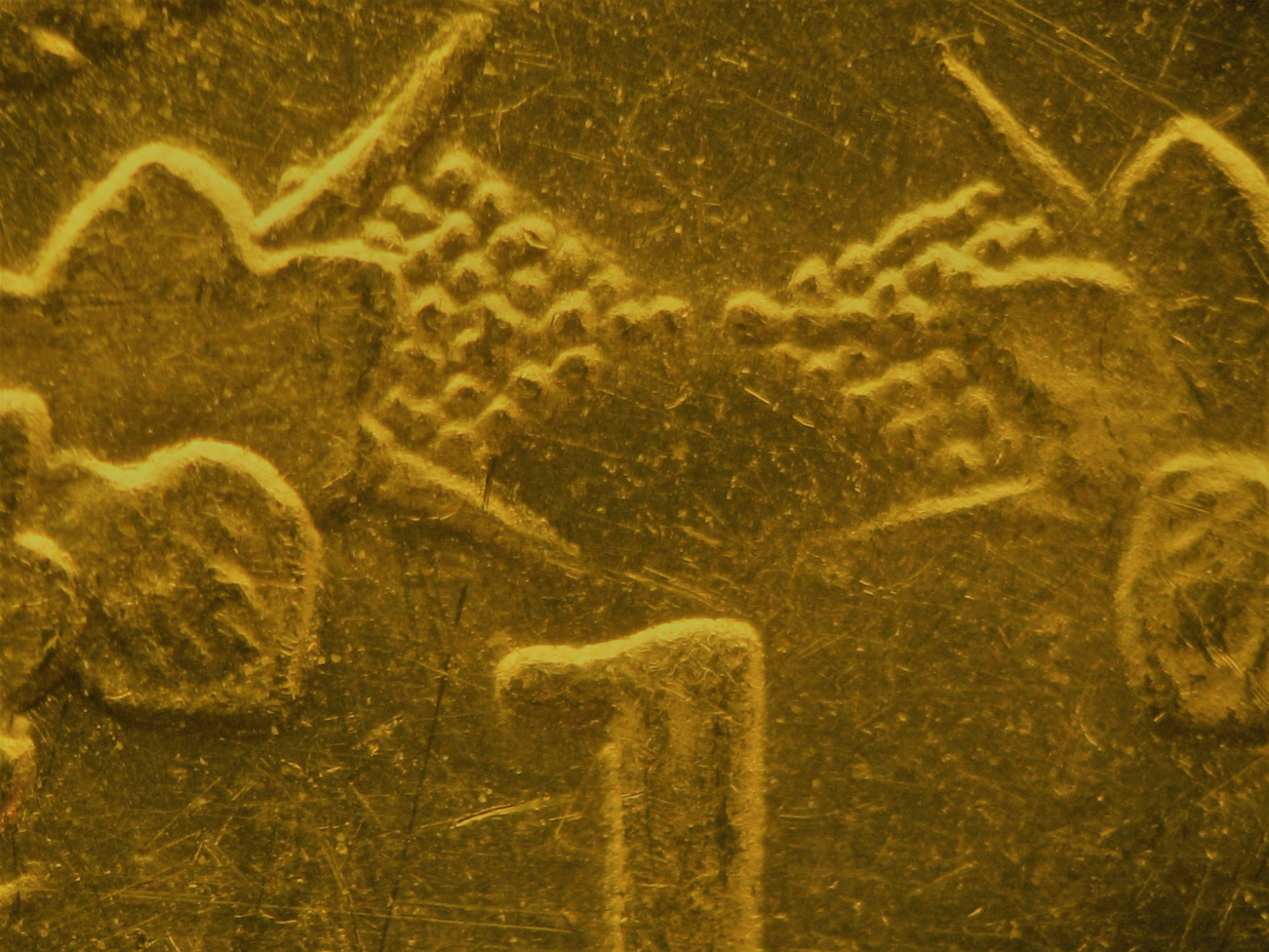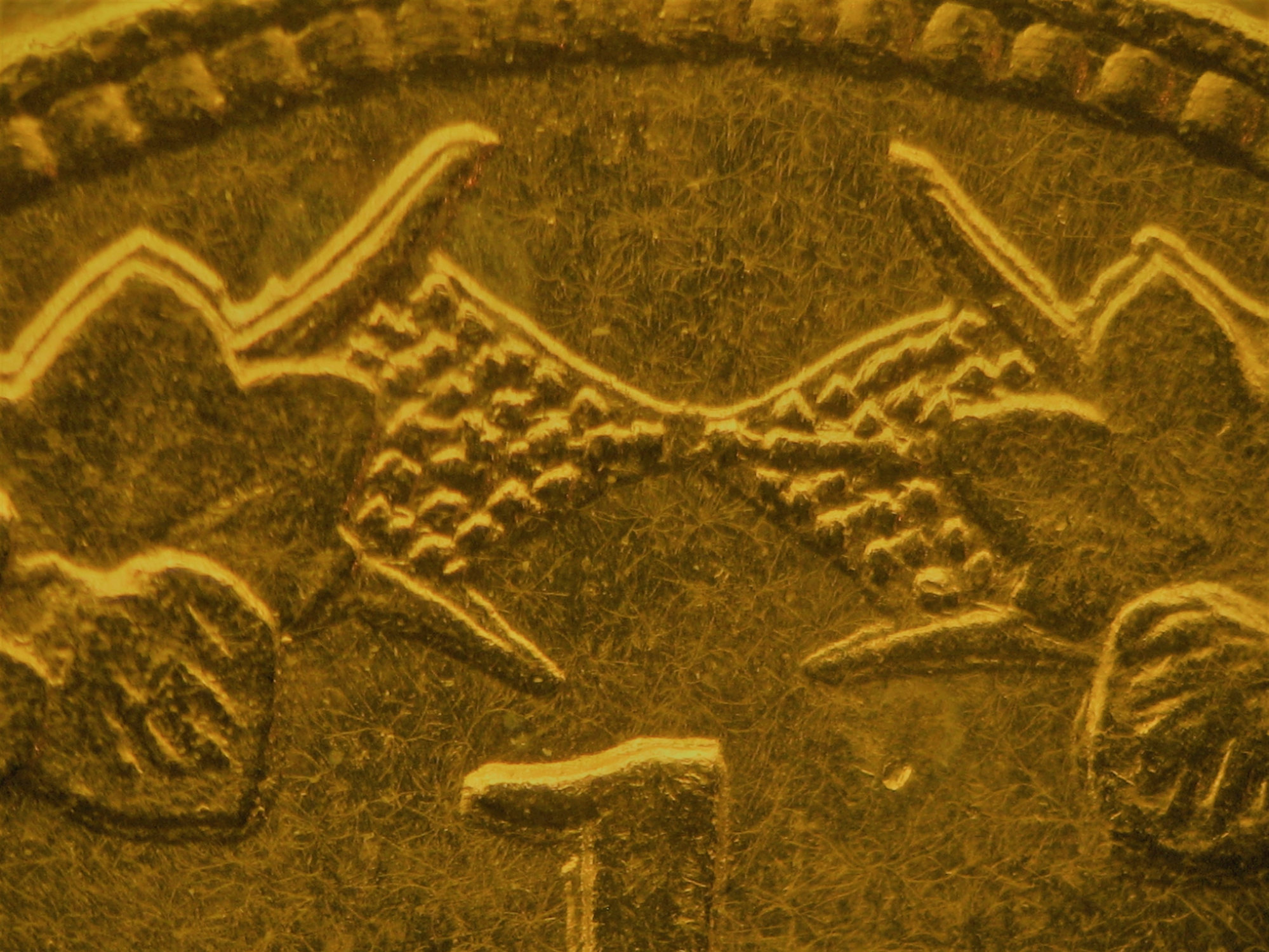My Counterfeit Detection Post #1
 Insider2
Posts: 14,452 ✭✭✭✭✭
Insider2
Posts: 14,452 ✭✭✭✭✭
I just had a class recently an I'll be sharing some of the things I learned. Adjectives like "fatty," "mushy," "rounded," and "indistinct" or not sharp were used to describe one of the commonly seen characteristics of counterfeits.
I've posted images of two gold dollars I saw. The instructor ![]() was a real joker. Notice the difference in the sharpness of the design.
was a real joker. Notice the difference in the sharpness of the design. ![]()
Fist coin:


Second coin:


2
Comments
Is a good thing to continue ones education.
There is more here than meets the eye.
It is better to show the whole coin for counterfeit detection.
Interesting... @Insider2 ...will you be elaborating on those pictures? There are certainly some notable differences... Cheers, RickO
@ricko asked: Interesting... @Insider2 ...will you be elaborating on those pictures? There are certainly some notable differences."
Yes, I will. This identical post is getting lots of comments on another forum I belong to. Not much interest here. I will probably try a #2 but that may be the last on CU. There are too many very knowledgeable folks here that know all this stuff.
Hey, don't sell us short. There are plenty of us who don't know much and could use the education.
Thanks for a great educational thread that should be of interest to all coin collectors.
Worry is the interest you pay on a debt you may not owe.
"Paper money eventually returns to its intrinsic value---zero."----Voltaire
"Everything you say should be true, but not everything true should be said."----Voltaire
My first rule is be suspect if it's not in plastic and price is over $200.00.
Thank You, I'll post another like this one next week right after my contest ends.
@Insider2 Thanks for posting this. There are many here like myself that are new and would appreciate and benefit from anything that you can show us regarding counterfeits.
Your time and effort to post this info is appreciated.
Thanks, Donato
Donato's Complete US Type Set ---- Donato's Dansco 7070 Modified Type Set ---- Donato's Basic U.S. Coin Design Set
Successful transactions: Shrub68 (Jim), MWallace (Mike)
Ok, the reveal:
Some of you may hate me for this, but I gave you a clue in the beginning. The instructor in the class is a troll! He likes to keep the students on their toes so...
Both coins are counterfeit. The first is a type seen around the 1970's. It was gold but a low alloy. These were so poorly made that some "experts" at the time thought they were cast counterfeits! Actually, they were among some of the first die struck examples made in the middle east.
The second is a great improvement seen by the late 1970's and early 1980's. This fake is much sharper and the correct alloy of gold. Compared to the fakes being made since 2010, this coin would be easily detected by a professional authenticator and all major gold dealers. Still, most collectors would think it was genuine.
I'll share some things I've learned in my classes:
Trust no one and verify everything. Now, whenever I examine a coin to buy, I'm looking for anything wrong with it! I cannot say for sure, but I'll bet that the professionals at the TPGS have targets on their backs. It's a big game called, "LET'S SEE WHAT WE CAN GET PASS THEM."
Same goes for attending a grading/authentication class. There is no such thing as "fair play." As for my OP, the class was shown the four slides I posted. The instructor explained how indistinct the designs were in the first one compared to the second. The entire class assumed that the bottom coin was a genuine specimen! Then he explained that both were fakes and how quickly (less than a decade) the quality of the fakes had improved. I hinted in my post that the instructor was a joker. I am also a joker.
I thought someone here might catch my "trick" so I made it virtually impossible. These were the images used in the class. The object my post and the class lesson was to show the difference in sharpness between two die-struck coins and to show what "fatty," "mushy," etc. looks like. As soon as I lay my hands on a genuine 1887 gold dollar (someone may do this using their genuine coin and my bottom two images) I'll post the comparison between both. Then the C/F 1887 should look "mushy" compared to the sharpness of the genuine!
Unfortunately, I feel that I must also add that this post was not made to embarrass any "snowflakes" :'( and you should not be. The TPGS look at actual coins, not photos. Hopefully, after reading this, some will understand and be able to visualize a few terms used to describe the appearance seen of many counterfeits.
Okay, I was definitely caught here. I would have thought the second coin was real after seeing how "mushy" the first coin looked.
Thanks for the enlightenment on how much more I have to learn to determine if a coin is a fake.
Donato
Donato's Complete US Type Set ---- Donato's Dansco 7070 Modified Type Set ---- Donato's Basic U.S. Coin Design Set
Successful transactions: Shrub68 (Jim), MWallace (Mike)
Thanks for the education
Successful transactions with : MICHAELDIXON, Manorcourtman, Bochiman, bolivarshagnasty, AUandAG, onlyroosies, chumley, Weiss, jdimmick, BAJJERFAN, gene1978, TJM965, Smittys, GRANDAM, JTHawaii, mainejoe, softparade, derryb, Ricko
Bad transactions with : nobody to date
UPDATE:
There is nothing significant in the OP image of the C/F 1887 coin to answer this question: "What details should I be looking for that I have missed." The only thing I can answer is that compared to the sharpness seen on a genuine 1887 dollar, the design on the bottom coin is also "mushy!" I don't have an 1887 at the moment but compare the sharpness on the 1887 C/F and this genuine Type 3. Now the C/F should look like the "mushy" piece in the comparison. It would be a better "exercise" if I had a genuine 1887 to post. Know what the genuine coin should look like!
@Insider2 Keep sharing info that you learned, I think many of us here will read it even if not acknowledged
Successful transactions with : MICHAELDIXON, Manorcourtman, Bochiman, bolivarshagnasty, AUandAG, onlyroosies, chumley, Weiss, jdimmick, BAJJERFAN, gene1978, TJM965, Smittys, GRANDAM, JTHawaii, mainejoe, softparade, derryb, Ricko
Bad transactions with : nobody to date
One thing I notice on the fake is the _absence__of die polish___
That is a good point. Generally, older fakes lack good metal flow and die polish. Ther surfaces are "flat and satiny" with no "life" (the reflectivity of genuine luster). The die polish on the genuine coin I posted is borderline "extreme."
You are making me look more closely at the images! I see there is a pattern of tiny octopus-looking white lines on the 1887 fake. That's just a pattern from a chemical haze so ignore it. As for die polish, the good counterfeits from transfer dies can "pick it up" to some degree. Another thing I just noticed: we have an example of a genuine coin with "spike tool marks! Look at the reverse from 12:30 to 1:00. Thanks!